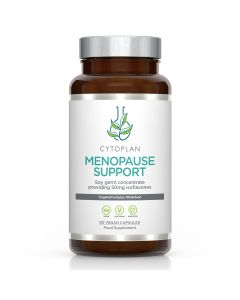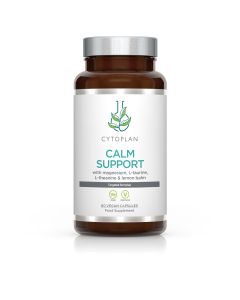How to manage menopausal hot flushes in the summer?
What are menopausal hot flushes?
The fluctuations and decline in the hormones oestrogen and progesterone, that occurs during the transition to menopause is associated with a range of side-effects that can affect a woman’s quality of life, health and overall wellbeing.
Hot flushes and night sweats are among the most common symptoms of menopause, experienced by around 80% of women at this time of life. Indeed, over half of women experience hot flushes at the beginning of perimenopause, when menstrual irregularities start to occur. Hot flushes can have far-reaching effects on the enjoyment of work and social activities, leisure time, mood, concentration, communication with others, sexual activity, as well as overall enjoyment and quality of life.
A typical hot flush begins as a sudden unexpected sensation of intense heat in the face and upper chest, which rapidly spreads to the entire body. The sensation usually lasts from 2 to 5 minutes and is associated with profuse sweating, a flushed appearance, palpitations, increased perspiration, feeling of anxiety and often followed by chills. Their frequency can vary from occasional attacks to as frequently as once or twice every hour. These symptoms are often more frequent at night, when they can cause night sweats and sleep disturbances.
The exact causes menopausal hot flushes aren't known, but research suggests that they occur due to reduced oestrogen levels causing the hypothalamus (your body's internal thermostat) to become more sensitive to slight changes in body temperature. When your body gets too warm, it starts a chain of events, including the hot flush, to cool you down. Other studies have demonstrated that the prevalence of hot flushes increases with higher levels of Follicle Stimulating Hormone (FSH), levels of which are typically higher in menopausal women.
Can menopausal hot flushes be worse in summer?
In a word... yes!
While many of us look forward to the hot and sunny summer days, for those of us who experience hot flushes, hot weather can be challenging. As the thermostat rises, your hypothalamus can kick into overdrive to try and cool you down – cue hot flushes and night sweats.
When we also consider that long, hot nights can make sleep more difficult and when you are already coping with menopausal symptoms such as night sweats and fatigue, this can compound the problem. Disrupted sleep can increase the production of our stress hormone, cortisol, which can, in turn, increase our feelings of anxiety and consequently exacerbate hot flushes. While we can’t control the weather, there are things we can do to try and keep cool, whilst supporting sleep and stress levels.
Practical tips to beat the heat
- Wear loose, cool clothing
- Clothes made from lightweight, natural fibres such as cotton, linen and bamboo can help to stop you from overheating. Wearing layers, which you can remove when you start to feel hot is also a good idea
- Avoid the midday sun. If you can, try to avoid going out in the middle of the day when the sun is at its hottest, and if you do have to go out, try to stick to the shade where it’s cooler
- Keep hydrated. Both hot weather and hot flushes can cause sweating, which increases the risk of dehydration. Being well hydrated is essential for helping to regulate body temperature and support the body’s natural cooling mechanisms. Water, smoothies and coconut water are great sources of hydration – plus our diet gives us 20-30% of our water intake, with foods such as lettuce, cucumber and strawberries providing great sources of water
- Use fans or air conditioners to cool your home, workplace, or vehicle, and carry a small, handheld fan that you can use on the go
- Keep a cool bedroom. Try keeping a window open or using a fan if your bedroom is warm. Your bedclothes should also be made from natural, breathable fabrics. A cool shower before bed can also help to keep your temperature down
Can diet and supplements help?
Wholefood, plant-forward diet2. Diets characterised by high intakes of fruits, vegetables, whole grains, pulses and legumes, with a higher proportion of healthy fats from foods such as oily fish, nuts and seeds, and a limited intake of sugar and unhealthy fats has been associated with a reduced prevalence and severity of hot flushes.
Natural phytoestrogens. Phytoestrogens are a group of plant-based compounds that have been found to have a similar chemical structure to oestrogen and may offer a gentle oestrogenic effect in the body.
One excellent source of phytoestrogens is soybeans. The intake of soy has been estimated to be far greater in Asian countries than in Western countries, which is likely to contribute to the fact that postmenopausal Asian women have significantly lower incidences (10–25%) of hot flush in comparison with those in Western countries (60–90%). Supplementing with isoflavones from soy has demonstrated reductions in the number of hot flushes in menopausal women.
Healthy fats– supplementing with omega-3 fatty acids, and in particular EPA, have been associated with a lower incidence of both hot flushes and sleep disturbance – indeed omega-3s have been suggested as a potential intervention to improve sleep quality in menopause.
Although EPA can be converted from dietary ALA, an omega-3 widely available in seeds and oils, including flaxseed, walnuts, chia, hemp, as well as green leafy vegetables, after menopause the efficiency of this conversion is reduced to around 0.2-6% (compared to 21% pre-menopause) - so you should ensure you obtain a regular intake of EPA through oily fish, or a suitable supplement.
Are there things I should avoid?
Refined carbohydrates and added sugars
In contrast to a plant-forward diet, an unhealthy diet with high levels of refined grains, sugary snacks, unhealthy fats and processed meats has been associated with higher general, physical, and mental symptoms of menopause, including night sweats and hot flushes.
Caffeine and alcohol
While there is mixed evidence that they contribute to hot flushes, some women do find that alcoholic and caffeinated drinks can be a trigger – so it might be worthwhile eliminating them for a period of time to see if your symptoms improve. It’s also important not to drink caffeine too close to bedtime as it can disrupt your sleep cycle.
Cigarette smoking
Cigarette smoking has been consistently associated with an increased incidence of hot flushes
How about lifestyle?
Physical activity
Exercise is part of a healthy lifestyle and have benefits for many menopausal concerns including cardiovascular risk, blood pressure control, osteoporosis, and mood. Some trials have demonstrated that aerobic and strength training exercise can decrease the frequency of hot flushes. That being said, vigorous exercise can increase the risk of hot flushes – so moderation is key!
Stress management
Stress can directly impact menopausal symptoms by increasing the frequency and intensity of hot flushes and other symptoms, making the menopausal transition more challenging. Various mind-body approaches, including cognitive-behavioural therapy (CBT), mindfulness-based stress reduction, and clinical hypnosis have demonstrated improvements to hot flushes. Yoga may also be effective at reducing hot flushes, as well as the psychological symptoms of menopause. Yoga practices that incorporate mindfulness and breathwork may be particularly effective.
Sleep support
Poor sleep can exacerbate hot flashes, and hot flashes can, in turn, lead to more sleep problems, creating a vicious cycle. You can support refreshing sleep by creating a routine and a restful environment. This might include keeping a regular bedtime, avoiding caffeine, alcohol, exercise and screens before bed and keeping a cool, quiet and dark bedroom. You could even include your own sleep rituals such as relaxing stretches or breathing exercises for 15 minutes before bed each night or sitting calmly with a cup of caffeine-free tea.












